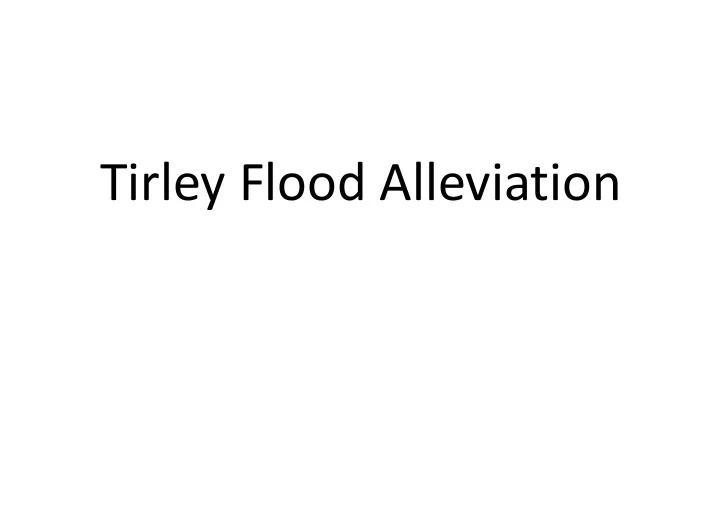

Tirley Flood Alleviation
Tirley outfall
Proposal • Pre-cast concrete outfalls at rivers edge – Angled at 45 o with flow of river – Flap valve control • Twin 900mm pipes, vertical arrangement • Pipe inlets located landward side of road – Bespoke in-situ headwall, reinforces existing structure and removes need to maintain structure under road
Outfall schematic
Indicative Outlet Headwall
Illustration of offset twin outfalls
Indicative Flow Control Device
Benefits • Will achieve desired outcome of reducing flood risk to buildings • Easier, quicker and cost effective construction e.g. reduced civil engineering requirements • Reduced maintenance liability and reduced risk of failure • Reduced risk liability e.g. majority is underground so reduced risk of damage, personal injury etc. • Increased opportunity for manual override and maintenance
Risks • Other methods considered potentially have improved flow capacity. • Any outlet of any design carries a risk of blockage. • Any works are dependant on the river levels and ground conditions – likely to commence before the end of May.
Natural Flood Management • What is it? M an-made landscape intervention that intercepts or modifies a hydrological flow pathway for the purpose of mitigating the impacts of flood and diffuse pollution, whilst improving the ecological environment. It is intended to mimic natural hydrological regimes and involves collection, storage and cleaning processes before allowing water to be released slowly back into the environment.
• There is no simple recipe for siting or constructing. It is the collective network, rather than individual features, that provide downstream flood mitigation. • The three main types can be broadly classified as: – Online barriers, such as Large Woody Debris (LWD). These have been shown to be potentially most beneficial to a catchment such as Tirley – Overland flow interception, such as pinned brash – Offline storage, such as ponds
Large Woody Debris LWD dams typically occur every 7 to 10 channel widths in natural streams, and the combined impact of multiple debris dams along reaches make a significant contribution to downstream flood alleviation.
Large Woody Debris examples
Overland Flow Interception • In order to increase roughness and aid attenuation/infiltration • Prevent runoff from quickly reaching watercourse, temporarily storing and trapping sediment e.g. buffer strips
Offline storage • Ponds adjacent to the watercourse can reduce flood peaks downstream by physically storing some of the flow but also slowing the rate of the flood peak downstream.
NFM Update • Detailed survey work on main drain to be commenced within next 4 weeks – this is to further inform location and capacity. • Site walkover with Environment Agency specialist to specifically identify suitable locally won material and any habitat constraints. • Both these will further inform the detailed design and work program, as well as the land owner agreements.
Recommend
More recommend